Blog
Stanley Cowell (born May 5, 1941) is an American jazz pianist and co-founder of the Strata-East Records label. Cowell was born in Toledo, Ohio. He began playing the piano at around the age of four, “and first became interested in jazz after gaining exposure to the music of pianist Art Tatum, a family friend”. “After high school, he attended both the Oberlin College Conservatory and the University of Michigan, during which time he also gained valuable experience playing with Rahsaan Roland Kirk“. He moved to New York in the mid-1960s.
Cowell played with Marion Brown, Max Roach, Bobby Hutcherson, Clifford Jordan, Harold Land, Sonny Rollins and Stan Getz. Cowell played with trumpeter Charles Moore and others in the Detroit Artist’s Workshop Jazz Ensemble in 1965–66. During the late 1980s Cowell was part of a regular quartet led by J.J. Johnson. Cowell taught in the Music Department of the Mason Gross School of the Arts at Rutgers, the State University of New Jersey.
https://www.youtube.com/watch?v=BJN-P-GFqOM
more...J. B. Lenoir /ləˈnɔːr/ (March 5, 1929 – April 29, 1967) was an American blues guitarist and singer-songwriter, active in the Chicago blues scene in the 1950s and 1960s.
His surname, which is French, is sometimes pronounced as the French “L’n WAHR”, but he pronounced it “La NOR”. His given name simply was J. B.; the letters are not initials.
He was born in Monticello, Mississippi. Lenoir’s guitar-playing father introduced him to the music of Blind Lemon Jefferson, which became a major influence. During the early 1940s, Lenoir worked with the blues artists Sonny Boy Williamson II and Elmore James in New Orleans. He was later influenced by Arthur Crudup and Lightnin’ Hopkins.
In 1949, he moved to Chicago, where Big Bill Broonzy helped introduce him to the blues community. He began to perform at local nightclubs, with musicians such as Memphis Minnie, Big Maceo Merriweather, and Muddy Waters, and became an important part of the city’s blues scene. He began recording in 1951 for J.O.B. Records and Chess Records. His recording of “Korea Blues” was licensed to and released by Chess, as having been performed by J. B. and his Bayou Boys. His band included the pianist Sunnyland Slim, the guitarist Leroy Foster, and the drummer Alfred Wallace.
more...Blind Willie McTell (born William Samuel McTier; May 5, 1898 – August 19, 1959 Thomson, GA) was a Piedmont blues and ragtime singer and guitarist. He played with a fluid, syncopated fingerstyle guitar technique, common among many exponents of Piedmont blues. Unlike his contemporaries, he came to use twelve-string guitars exclusively. McTell was also an adept slide guitarist, unusual among ragtime bluesmen. His vocal style, a smooth and often laid-back tenor, differed greatly from many of the harsher voices of Delta bluesmen such as Charley Patton. McTell performed in various musical styles, including blues, ragtime, religious music and hokum.
McTell was born in Thomson, Georgia. He learned to play the guitar in his early teens. He soon became a street performer in several Georgia cities, including Atlanta and Augusta, and first recorded in 1927 for Victor Records. He never produced a major hit record, but he had a prolific recording career with different labels and under different names in the 1920s and 1930s. In 1940, he was recorded by the folklorist John A. Lomax and Ruby Terrill Lomax for the folk song archive of the Library of Congress. He was active in the 1940s and 1950s, playing on the streets of Atlanta, often with his longtime associate Curley Weaver. Twice more he recorded professionally. His last recordings originated during an impromptu session recorded by an Atlanta record store owner in 1956. McTell died three years later, having suffered for years from diabetes and alcoholism. Despite his lack of commercial success, he was one of the few blues musicians of his generation who continued to actively play and record during the 1940s and 1950s. He did not live to see the American folk music revival, in which many other bluesmen were “rediscovered”.
McTell’s influence extended over a wide variety of artists, including the Allman Brothers Band, who covered his “Statesboro Blues“, and Bob Dylan, who paid tribute to him in his 1983 song “Blind Willie McTell“, the refrain of which is “And I know no one can sing the blues like Blind Willie McTell”. Other artists influenced by McTell include Taj Mahal, Alvin Youngblood Hart, Ralph McTell, Chris Smither, Jack White, and the White Stripes.
https://www.youtube.com/watch?v=ds1xVHsXm7Y&list=PLA1E19F781AE40709
more...Idir, one of the greatest voices of Algerian Kabyl (Berber) music died May 3, 20230 in Paris from pulmonary disease. The passing was confirmed on his official Facebook page.
Idir was born on October 25, 1949 in what was then French Algeria. He became a musician in 1973 and one of the most passionate supporters of Kabyl music abroad. In 1975 he moved to France, where he recorded his debut album.
more...Alto saxophone great Richie Cole once referred to in Downbeat magazine as “the sax machine,” has died at the age of 72. Cole died on May 1 at his home in Carnegie, Pa., a suburb of Pittsburgh. His daughter Annie Cole said he died in his sleep, of natural causes.
Richie Cole was a prolific composer who has recorded over 50 albums with the likes of Eddie Jefferson, the Manhattan Transfer, Bobby Enriquez, Freddie Hubbard, Sonny Stitt, Art Pepper, Tom Waits, Boots Randolph, and Nancy Wilson. He performed at the historic Village Vanguard and Carnegie Hall. Cole even gave a command performance for Queen Elizabeth II.
Years ago, the prominent jazz critic Leonard Feather noted Cole’s lively and informal presentations and “the free-wheeling and sometimes satirical nature of his performances.” The website About Jazz says Cole “is the last of a breed — a fast and competitive musical gunslinger acquiring legendary status for his willingness to demonstrate his command of Charlie Parker’s bebop language by taking on all comers at any speed.”
“I like to trick people into liking jazz by keeping things friendly, upbeat, and familiar,” stated Cole, who represented a musical link that runs from bebop’s founder Charlie Parker and innovator Phil Woods to the present. Woods — who married Parker’s widow — taught at a summer performing arts camp in New Hope, where he met the young Cole and became his mentor. The two eventually joined in recording an album, “Side by Side.”
https://www.youtube.com/watch?v=O68mjlTeoBM
more...At a distance of about 450 light years(140 parsecs) away, it is located within the Taurus-Auriga Star Forming Region.
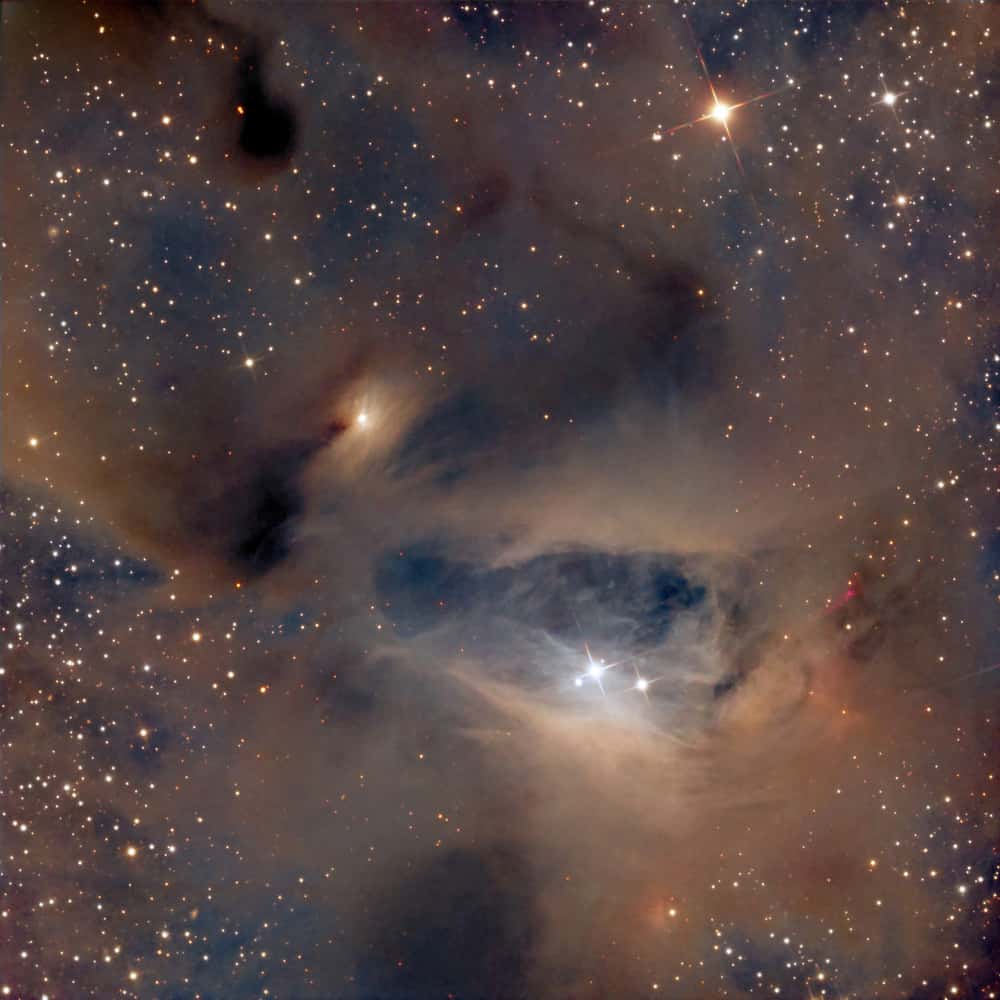
CW Tauri
Sonny Payne (May 4, 1926 – January 29, 1979) was an American jazz drummer, best known for his work with Count Basie and Harry James.
Payne’s father was Wild Bill Davis‘s drummer Chris Columbus. After early study with Vic Berton, in 1944 Payne started playing professionally around New York with the Dud and Paul Bascomb band, Hot Lips Page, Earl Bostic (1945–1947), Tiny Grimes (between 1947 and 1950), and Lucille Dixon(1948).
From 1950 to 1953, Payne played with Erskine Hawkins‘ big band, and led his own band for two years, but in late December, 1954, he made his most significant move, joining Basie’s band for more than ten years of constant touring and recording. He was originally asked only to temporarily fill in for Basie’s ailing regular drummer, but Payne’s flashy style was such a hit that he was immediately hired to be Basie’s permanent drummer.
more...Ronald Levin Carter (born May 4, 1937) is an American jazz double bassist. His appearances on 2,221 recording sessions make him the most-recorded jazz bassist in history.
Carter is also a cellist who has recorded numerous times on that instrument. Some of his studio albums as a leader include: Blues Farm (1973); All Blues (1973); Spanish Blue (1974); Anything Goes (1975); Yellow & Green (1976); Pastels (1976); Piccolo (1977); Third Plane (1977); Peg Leg(1978); and A Song for You (1978).
He was a member of the Miles Davis Quintet in the mid 1960s, which also included Herbie Hancock, Wayne Shorter and drummer Tony Williams. Carter joined Davis’s group in 1963, appearing on the album Seven Steps to Heaven and the follow-up E.S.P.. Carter also performed on some of Hancock, Williams and Shorter’s recordings during the sixties for Blue Note Records. He was a sideman on many Blue Note recordings of the era, playing with Sam Rivers, Freddie Hubbard, Duke Pearson, Lee Morgan, McCoy Tyner, Andrew Hill, Horace Silver and many others. He was elected to the Down Beat Jazz Hall of Fame in 2012. In 1993, he won a Grammy Award for Best Jazz Instrumental Group and another Grammy in 1998 for “an instrumental composition for the film” Round Midnight. In 2010 he was honored with France’s premier cultural award, the medallion and title of Commander of the Ordre des Arts et des Lettres.
https://www.youtube.com/watch?v=asJRAGUlZ1c
more...Donald Ernest Friedman (May 4, 1935 – June 30, 2016) was an American jazz pianist. He began playing in Los Angeles and moved to New York in 1958. In the 1960s, he played with both modern stylists and more traditional musicians.
Friedman was born on May 4, 1935, in San Francisco.Both of his parents were immigrants to the United States: his father, Edward Friedman, was from Lithuania, and his mother, Alma Loew, was from Germany. He began playing the piano at the age of four. He switched from classical music to jazz after his family moved to Los Angeles when he was fifteen. His early jazz piano influence was Bud Powell. Friedman briefly studied composition at Los Angeles City College.
On the West Coast, Friedman performed with Dexter Gordon, Chet Baker, Buddy DeFranco, and Ornette Coleman. He was also a member of Clark Terry‘s big band.
Friedman moved to New York permanently in 1958. In the 1960s, Friedman played with both modern jazz and more traditional or popular musicians. The former included Coleman, Eric Dolphy, Jimmy Giuffre, Booker Little, and Attila Zoller; the latter included Bobby Hackett and Herbie Mann. Frieman’s first album as a leader was A Day in the City, in 1961.
more...Walter Maynard Ferguson CM (May 4, 1928 – August 23, 2006) was a Canadian jazz trumpeter and bandleader. He came to prominence in Stan Kenton‘s orchestra before forming his own big band in 1957. He was noted for his bands, which often served as stepping stones for up-and-coming talent, his versatility on several instruments, and his ability to play in a high register.
Ferguson was born in Verdun (now part of Montreal), Quebec. Encouraged by his mother and father (both musicians), he started playing piano and violin at the age of four. At nine years old, he heard a cornet for the first time in his local church and asked his parents to buy one for him. When he was thirteen, he soloed with the Canadian Broadcasting Corporation Orchestra. He was heard frequently on the CBC, notably featured on a “Serenade for Trumpet in Jazz” written for him by Morris Davis. He won a scholarship to the Conservatoire de musique du Québec à Montréal where he studied from 1943 to 1948 with Bernard Baker.
more...Umm Kulthum (Arabic: أم كلثوم, Egyptian Arabic pronunciation: [ʊm kʊlˈsuːm]; French: Oum Kalthoum; born Fāṭima ʾIbrāhīm es-Sayyid el-Beltāǧī فاطمة إبراهيم السيد البلتاجي on 31 December 1898, or 4 May 1904; died 3 February 1975) was an Egyptian singer, songwriter, and film actress active from the 1920s to the 1970s. She was given the honorific title Kawkab al-Sharq (كوكب الشرق, “Star of the East”).
Umm Kulthum was known for her vocal ability and unique style. She sold over 80 million records worldwide, making her one of the best-selling Middle Eastern singers of all time. She is considered a national icon in her native Egypt; she has been dubbed “The voice of Egypt” and “Egypt’s fourth pyramid”.
Umm Kulthum was born in the village of Tamay e-Zahayra, belonging to the city of Senbellawein, Dakahlia Governorate, in the Nile Delta. Her birth date is unconfirmed, as birth registration was not enforced throughout Egypt at that time. Some sources claim that she was born either on 31 December 1898; 31 December 1904; or 4 May 1904. She learned how to sing by listening to her father teach her older brother, Khalid. From a young age she showed exceptional singing talent. Her father, an imam at the local mosque, taught her to recite the Qur’an, and she is said to have memorized the entire book. When she was 12 years old, her father noticed her strength in singing so he asked her to join the family ensemble. She dressed as a boy for her father to not face disapprobation due to having a girl on stage. At the age of 16, she was noticed by Mohamed Abo Al-Ela, a modestly famous singer, who taught her the old classical Arabic repertoire. A few years later, she met the famous composer and oudist Zakariyya Ahmad, who invited her to come to Cairo.
https://www.youtube.com/watch?v=R4z3bxEUICg
more...WEAR YOUR MASK
GLOVES AND GLASSES
When necessary!
PEOPLE ARE DYING, BE RESPONSIBLE, SAVE LIVES
Too many people in Minnesota are being reckless and careless by not wearing masks!

Today at this time I would usually be in Powder Horn Park storing music gear for my bands that would perform about 5-6pm while drinking coffee from the Mayday Cafe. I would also be setting up for the 330pm Ceremony extravaganza next to the lake on the west side of the park. With the giant puppets the Sun, The Woods, The Prairie, The Sky and the River. Next checking in with my van in the parking lot then scurry off to the Parade Site at 25th & Bloomington with snare & harness on hand readying for the noon start of the Parade with Your Community Band. However this is the year of COVID-19 so this event will not happen in its splendid, glorious, spectacle of our Community Gathering Celebrating Our World in commonality and struggle against the odds of Politics, Pollution, Inequality, Racism and all the challenges that bring us together in unity to declare our love of Humanity, Mother Earth and the Beauty of Our Living Beings. This morning there are over 6,000 cases of the virus and almost 400 deaths. So Stay at Home and when your out and about wear a mask and gloves when necessary.
We will celebrate another day in another very changed and altered World.

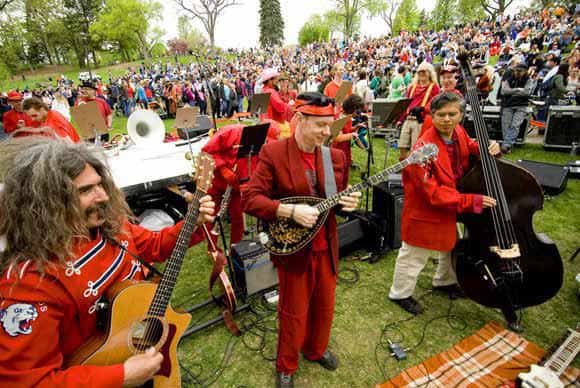

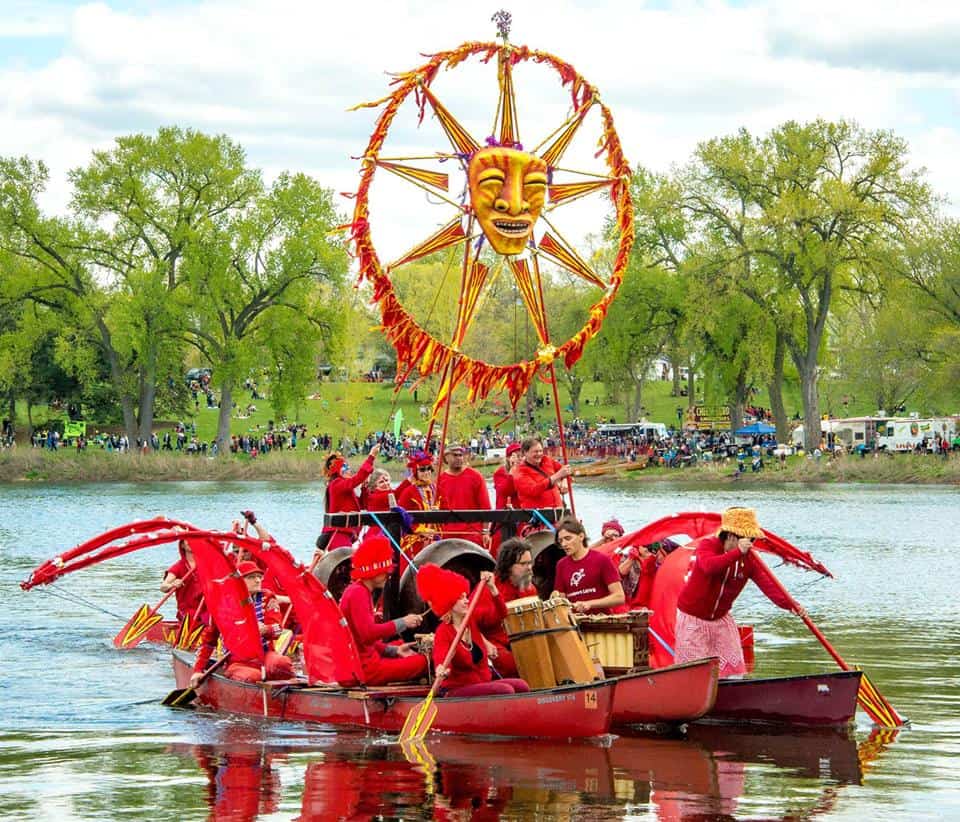
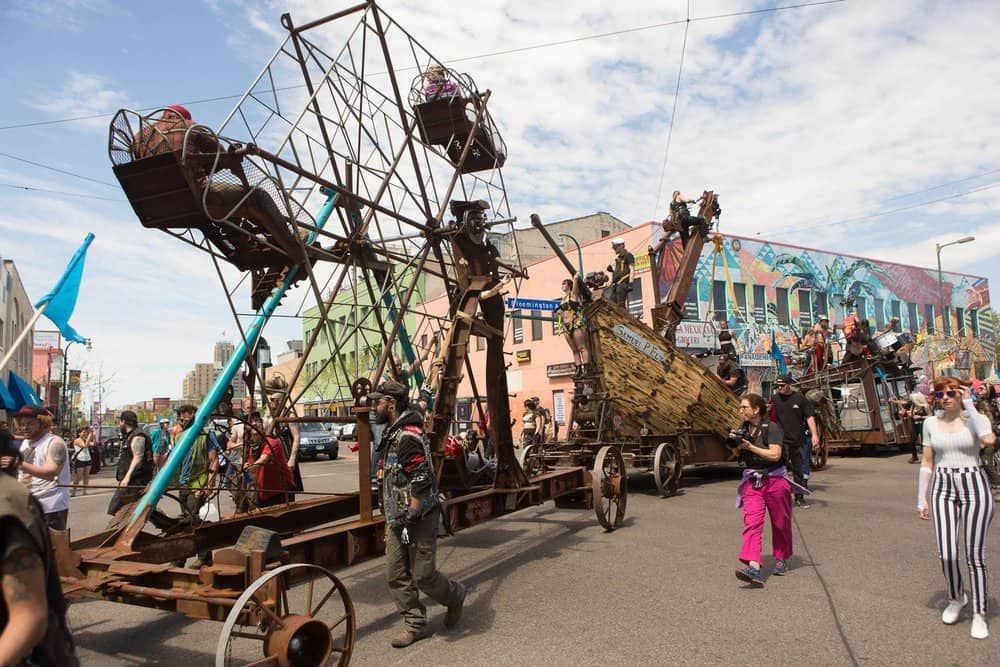
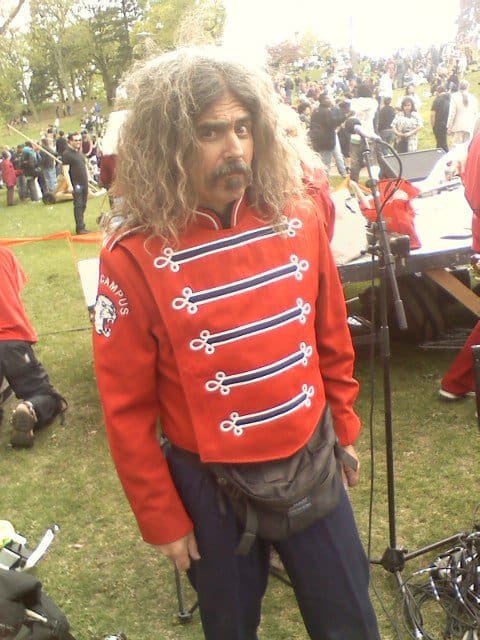
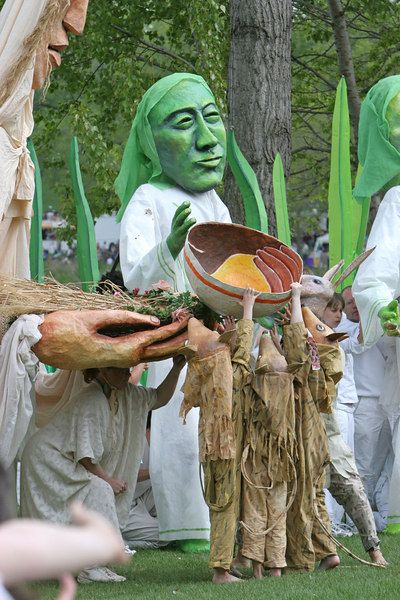
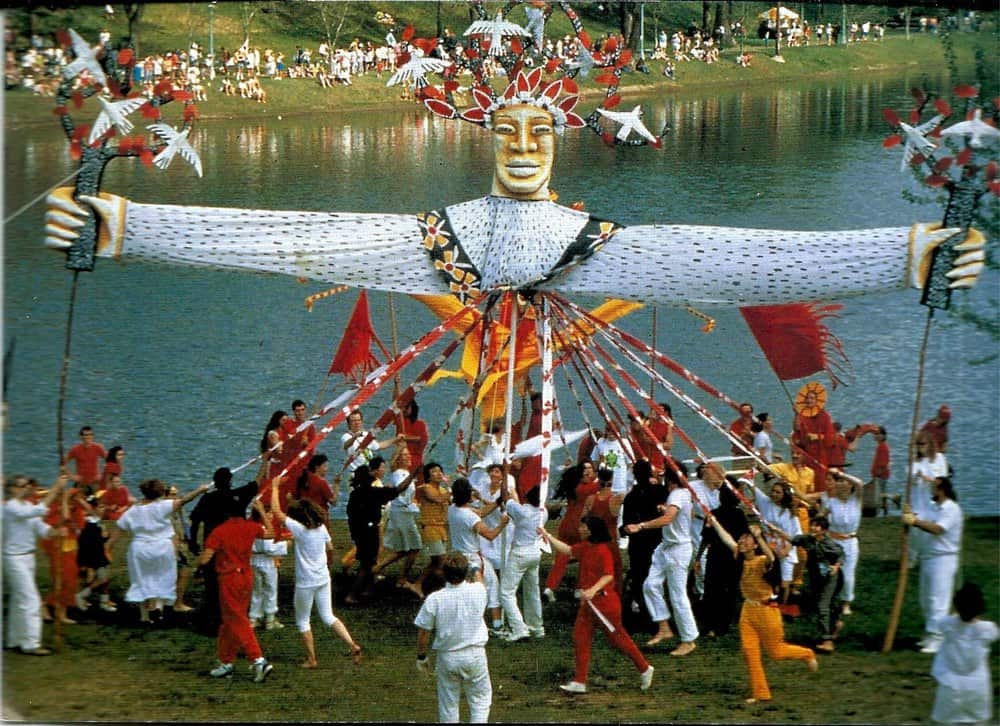
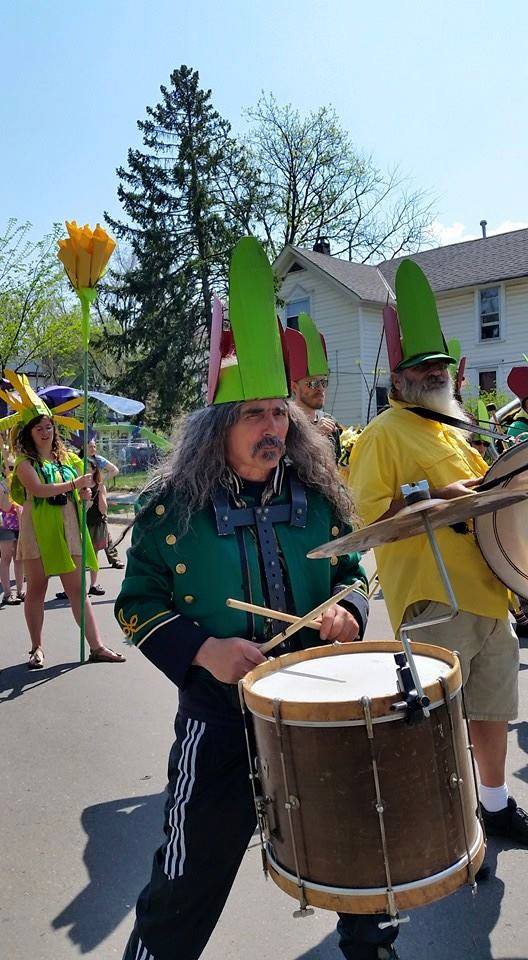
The Crab Nebula (catalogue designations M1, NGC 1952, Taurus A) is a supernova remnant in the constellation of Taurus. The current name was caused by William Parsons, 3rd Earl of Rosse, observing the object in 1840 using a 36-inch telescope and produced a drawing that looked somewhat like a crab. Corresponding to a bright supernova recorded by Chinese astronomers in 1054, the nebula was observed later by English astronomer John Bevis in 1731. The nebula was the first astronomical object identified with a historical supernova explosion.
At an apparent magnitude of 8.4, comparable to that of Saturn’s moon Titan, it is not visible to the naked eye but can be made out using binocularsunder favourable conditions. The nebula lies in the Perseus Arm of the Milky Way galaxy, at a distance of about 2.0 kiloparsecs (6,500 ly) from Earth. It has a diameter of 3.4 parsecs (11 ly), corresponding to an apparent diameter of some 7 arcminutes, and is expanding at a rate of about 1,500 kilometres per second (930 mi/s), or 0.5% of the speed of light.
Pulsars are dead stars that spin remarkably steadily – they are some of the most regularly ticking clocks in the Universe! However, every few years some pulsars ‘glitch’, and speed up a tiny amount almost instantaneously. Understanding what causes these glitches may unveil what’s really happening inside these super-dense dead stars.
Detailed theoretical and computer models are hard to connect to real observations, so instead PhD student Julian Carlin and Chief Investigator Andrew Melatos, from the ARC Centre of Excellence for Gravitational Wave Discovery (OzGrav), built a ‘meta-model’ in a paper recently published in the Monthly Notices of the Royal Astronomical Society.
The meta-model relies on the idea that ‘stress’ builds up inside the pulsar until it reaches a threshold, and then some of this stress is released as a glitch. The interesting thing about this meta-model is that the stress increases by taking a ‘random walk’ upwards: like an intoxicated person returning home from the pub who might take two steps forward, one step back, then three steps forward. The randomness in how the stress builds is supported by some theoretical models, as well as a recent study of a glitch-in-action led by OzGrav researchers Greg Ashton, Paul Lasky, and others.
Meta-models make predictions about what we should see in the long term from glitching pulsars.
‘This meta-model predicts that there should always be a correlation between big glitches and the time until the next glitch: if a lot of stress is released, it takes longer on average for the pulsar to build up enough stress for another glitch,’ explains Carlin.
Using this prediction, Carlin and Melatos tried to falsify the meta-model, asking the question: ‘Are there long-term observations that can’t be explained?’ The answer depends on the pulsar. Some are well-explained by the meta-model, while others don’t quite match the predictions.

More Posts
- Grachan Moncur III
- Josephine Baker
- World Music Warsaw Village Band
- Daily Roots King Tubby
- Thelonius Monk Wisdom
- Cosmos NGC 1097
- Charlie Watts
- Valaida Snow
- Edward Elgar
- World Music Génération Taragalte
- Daily Roots The Aggrovators
- Cosmos Sh2-263
- Herbie Lovelle
- Nelson Riddle
- Lafayette Leake
- World Music Bab L’ Bluz
- Daily Roots Prince Jammy
- Temple Israel Erev Shabbat Service
- Cosmos WR 134
- Peter Yarrow